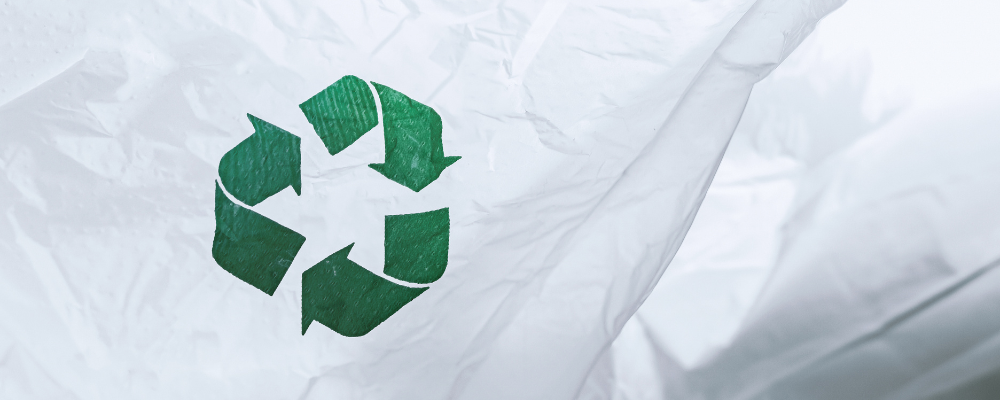By Josiah Dunker | September 25, 2024 | Recyclable Packaging Material, Recyclable Plastic | 0 Comments

Revolutionizing Packaging: Embracing Recyclable Plastic for a Sustainable Furture
In a world increasingly aware of environmental impact, the need for sustainable packaging solutions has never been greater. At the forefront of this movement is recyclable plastic packaging. Offering a blend of durability, versatility, and eco-friendliness, recyclable plastic packaging is transforming industries and reducing waste. This blog delves into the world of recyclable plastic packaging materials, addressing key questions and highlighting how businesses can make informed choices for a greener future.
Understanding Recyclable Plastic Packaging
What Plastic Packaging is Recyclable?
Recyclable plastic packaging encompasses a variety of materials commonly used across industries. This includes polyethylene terephthalate (PET), high-density polyethylene (HDPE), and low-density polyethylene (LDPE). These plastics are often found in products such as water bottles, milk jugs, and plastic bags. PET and HDPE are particularly valued for their recyclability, frequently processed at recycling facilities into new products, reducing the need for virgin raw materials.
What is Recyclable Packaging Made Of?
Recyclable packaging is typically made from materials that can be processed and repurposed multiple times without significant degradation of quality. Commonly used materials include recycled plastic resins, paper products, and cardboard boxes. For instance, recycled PET (rPET) can be made into new bottles, while recycled HDPE can be used for creating new containers and even construction materials. Paper packaging and cardboard boxes, often made from recycled fibers, also play a significant role in the sustainable packaging landscape.
Recycled plastics, particularly those used in food packaging, undergo rigorous cleaning and processing to ensure safety and quality. This ensures that recycled products are just as reliable and effective as those made from virgin materials, without compromising on performance or safety.
The Most Recyclable Packaging Materials
What is the Most Recyclable Packaging?
When it comes to recyclability, cardboard boxes and paper products often top the list. These materials are not only easily recyclable but also biodegradable, breaking down naturally without harming the environment. However, recycled plastic materials like PET and HDPE are also highly recyclable and widely accepted at recycling facilities. Bubble wraps, when made from LDPE, can be recycled at specific drop-off locations, contributing to reducing packaging waste.
Reusable and Recyclable Packaging Solutions
What Packaging Material Can Be Recycled or Reused?
Beyond plastics, several packaging materials can be recycled or reused effectively. Paper products, including paper packaging and biodegradable packing peanuts, offer excellent recyclability. Cardboard boxes can be reused multiple times before recycling, adding to their eco-friendly credentials. Moreover, packaging made from materials such as aluminum and glass can also be recycled indefinitely without losing quality, making them exceptional choices for sustainable packaging.
Biodegradable packing peanuts, often made from natural materials like cornstarch, dissolve in water and are compostable, providing an environmentally friendly alternative to traditional Styrofoam peanuts. These innovative materials not only reduce waste but also minimize the environmental impact of packaging.
What Plastic Packaging is Not Recyclable?
Despite the advancements in recycling technology, not all plastic packaging is recyclable. Materials such as polyvinyl chloride (PVC), polystyrene (PS), and certain multi-layered plastics pose significant challenges. These plastics are often found in items like shrink wraps, Styrofoam cups, and some food packaging. Their complex composition and potential for contamination often make them unsuitable for standard recycling processes. Identifying these materials is crucial for proper waste management and reducing environmental impact.
Identifying Recyclable Plastic Packaging
How Do You Know if Plastic Packaging is Recyclable?
Determining the recyclability of plastic packaging involves checking for specific symbols and codes. The Resin Identification Code (RIC), typically found on the bottom of plastic products, provides valuable information. Codes 1 (PET) and 2 (HDPE) indicate highly recyclable plastics. Additionally, local recycling guidelines and resources can offer insights into which types of packaging materials are accepted in your area. When in doubt, reaching out to recycling facilities or consulting packaging manufacturers can provide clarity.
Consumers can also look for labels that indicate recyclability, such as the chasing arrows symbol, which signifies that the material can be recycled. Moreover, packaging that comes with clear disposal instructions helps in ensuring proper recycling practices.
Making a Sustainable Choice
As businesses and consumers become more eco-conscious, the demand for sustainable packaging solutions continues to rise. Embracing recyclable plastic packaging is a significant step towards reducing waste and conserving natural resources. At Rapid Packaging, we are committed to providing innovative, environmentally friendly packaging solutions that align with your sustainability goals. From recycled plastic to paper products, our range of packaging materials ensures you can make a positive impact on the environment.
Ready to make the switch to sustainable packaging? Reach out to Rapid Packaging today to talk to one of our experienced professionals. Visit our website at rapidpackaging.com for more information on how we can help you embrace eco-friendly packaging solutions that meet your business needs. Let's work together to build a greener future, one package at a time.
Contact Us Today to Learn More About Recyclable Plastic!

About the Author: Josiah Dunker
Josiah is the Business Development Manager for Rapid Packaging Inc., with a Bachelor in Business and a passion for the packaging industry sparked by his dad inventing Frogtape; he used to be a national rep swimmer, owned horses, and now enjoys an active lifestyle in the suburbs.
Need Help?
Increase your productivity with entry-level of full-line packaging automation, reduce packaging costs, and increase product protection with a full catalog of packaging supplies.